Here’s what I came up with for a birthday present for somebody born on Xmas:
Model Gift Build Fail?: 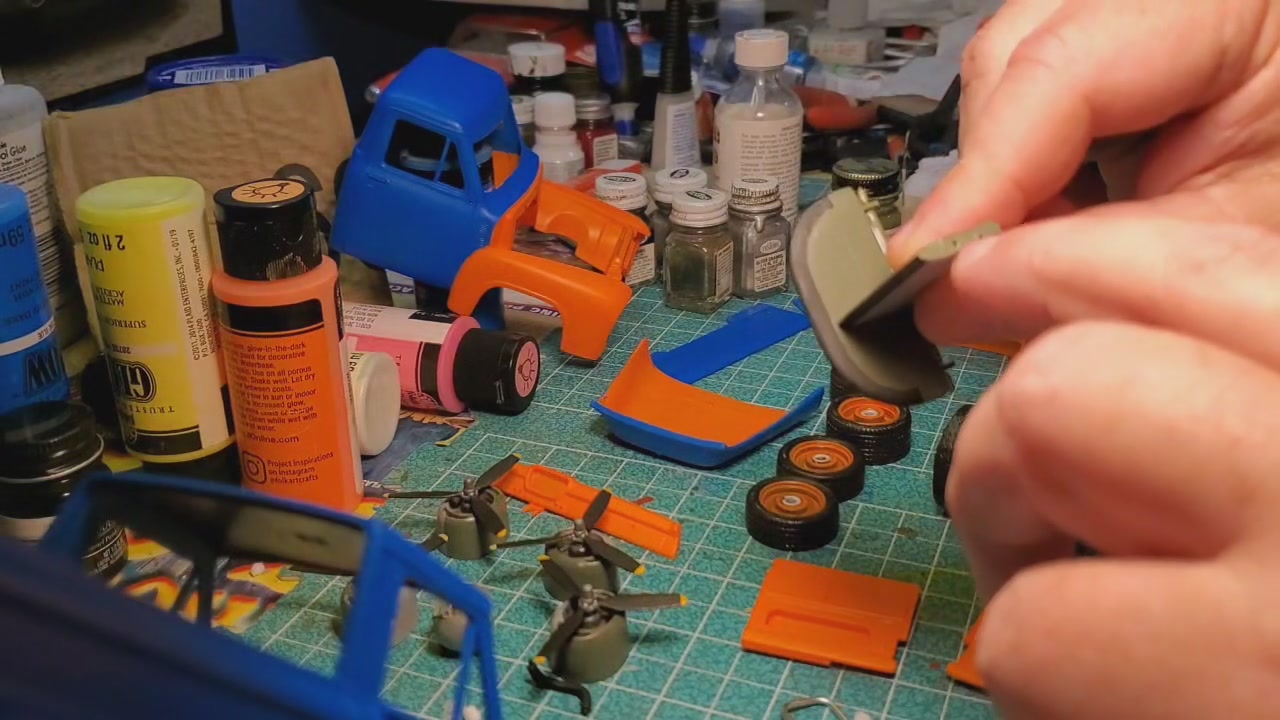 Part-1, old Airfix B-24 bomber problems!
Part-1, old Airfix B-24 bomber problems!
Model Gift Build: 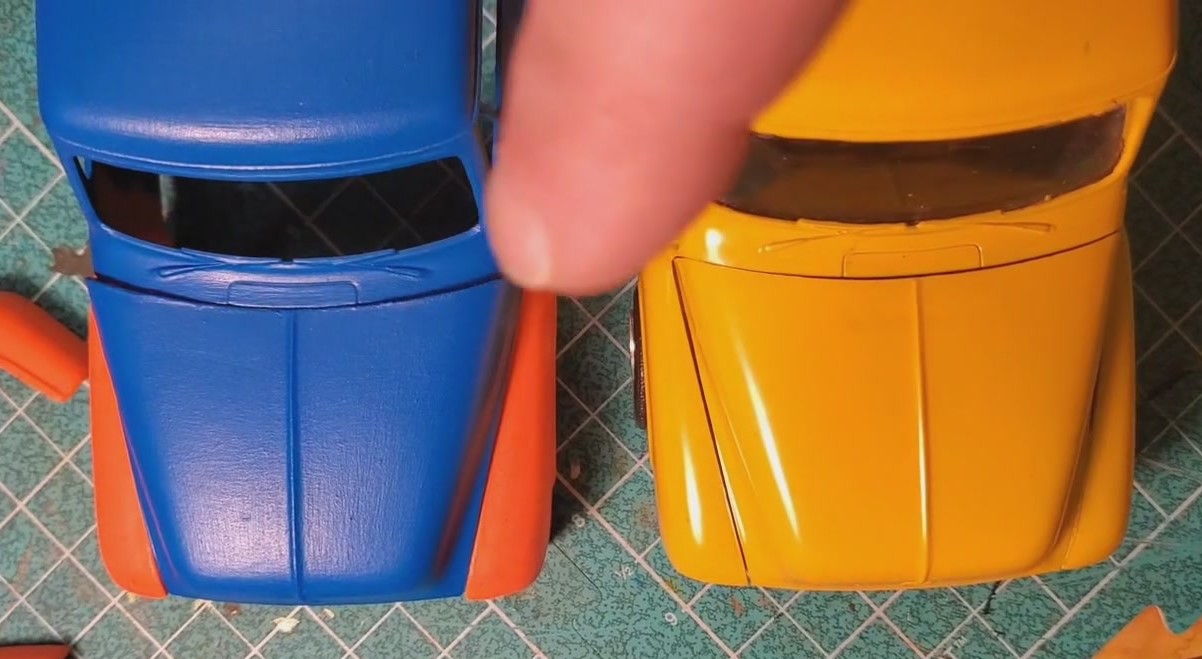 1978 VERSUS 2023, MADE IN CHINA OUT TO GET US?
1978 VERSUS 2023, MADE IN CHINA OUT TO GET US?
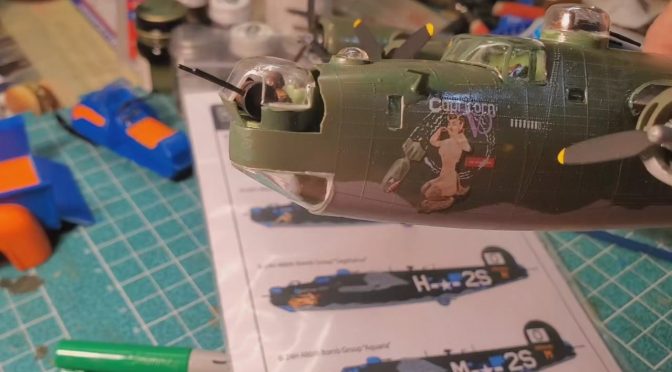
Here’s what I came up with for a birthday present for somebody born on Xmas:
Model Gift Build Fail?:  Part-1, old Airfix B-24 bomber problems!
Part-1, old Airfix B-24 bomber problems!
Model Gift Build:  1978 VERSUS 2023, MADE IN CHINA OUT TO GET US?
1978 VERSUS 2023, MADE IN CHINA OUT TO GET US?
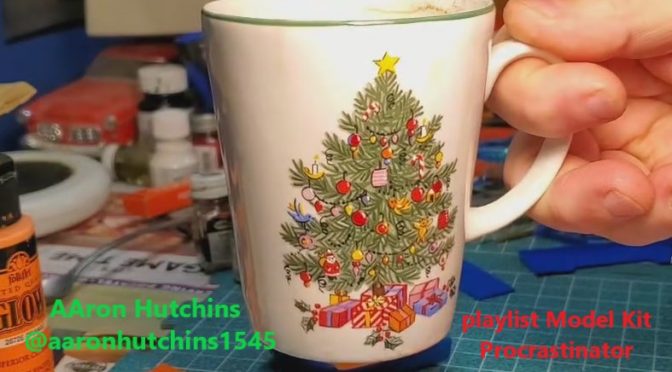
This year’s Yuletide runs from 21st December 2023 to 1st January 2024.
Two down and four to go, oh well.
Part-1:
Part-2:
Model Gift Build update: BOUGHT MYSELF A NEW KIT, 1ST TIME SINCE 2019!
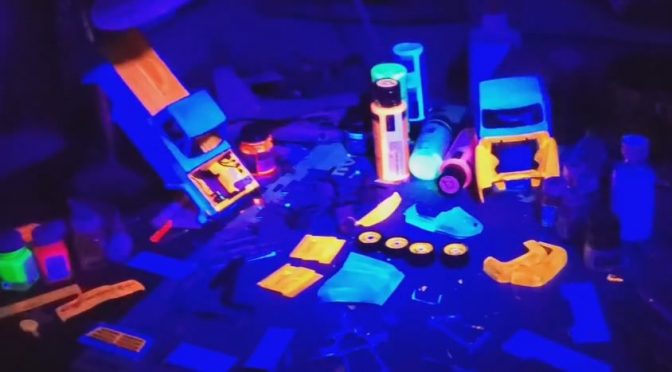
Will any get built in time for Xmas?
Part-1, old Airfix bomber problems:
Part-2, what else is going to go wrong:
Model Gift Build update: WHY MODEL BUILDERS NEED TO BUY THEIR OWN HOUSE!
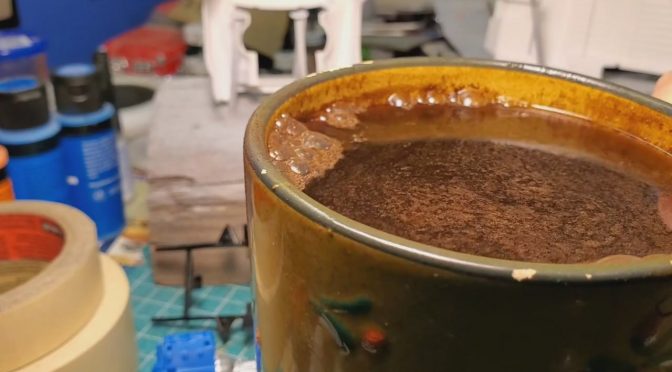
Too many gifts to build in such a short time, why can’t I start them sooner?
Part-1, coffee is too cold, coffee is too hot:
Part-2, why you should buy a house:
Previous episode: STALLED GIFT BUILD HELL, AND A TRIP DOWN MEMORY LANE?
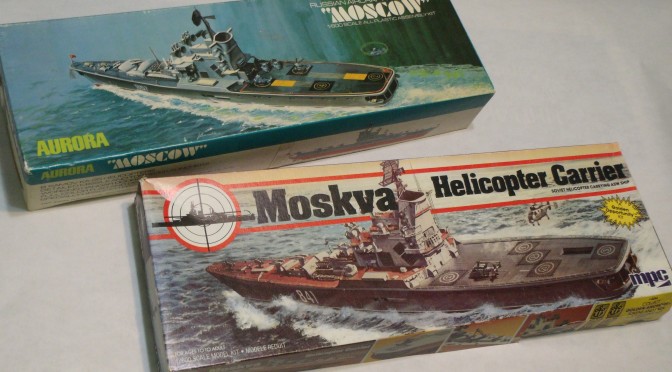
One of the first ship kits I built was the 1:600 scale Aurora Moscow helicopter anti-submarine ship (not to be confused with the Moskva of the Atlant class of missile cruisers, aka Project 1164). I also built the Airfix version, and there are differences.
Back then it was the final two decades of the Cold War (unbeknownst to both NATO and Warsaw Pact) and we average kit builders in the United States didn’t have access to reliable information on Warsaw Pact vehicles. Most publications in English would only say that what we now know was Project 1123 Kondor couldn’t handle rough seas, and that production was halted after only two ships were launched. I always doubted such NATO propaganda because if the ships were so bad why were they in use until the mid-1990s?
Today we do have access to reliable info (including Kagero Top Drawings #55 book, with detailed scale drawings of things like missile launchers, for those of us who read English), and we have at least one aftermarket detailing set for the 1:600 scale Moskva. I spent a lot of money on a Russian magazine supplement before learning about the Kagero book. I also got a hold of the photo etched set #618 by White Ensign.
The Aurora Moscow was first issued in 1969, and for some reason last issued in 1972. Airfix issued their Moskva in 1973, and as far as I know last issued it in the late 1990s. In the early 1980s it was issued in the U.S. under the MPC brand.
The Aurora and Airfix hulls are just short of 13 inches (33cm) long, the Aurora being slightly shorter than Airfix. The Aurora hull is also taller and skinnier than the Airfix hull. The anchors are molded onto the Aurora hull and both kits have different shaped hull openings and portholes.
Both kits have chunky plastic for the radar antennae. Both kits do not come with missiles for the missile launchers. Both kits do not have the massive retractable sonar dome located towards the front of the bottom of the hull. It was this massive dome that was probably the reason the tall ship reportedly nose dived into the water during rough seas. Apparently NATO was unaware of this dome during the Cold War, or for some reason it was never mentioned in publications made available to the general public.
The Airfix Kamov helicopters are molded in two halves and don’t look good. The Aurora helicopters are molded in one piece, they look good but not quite like Kamovs (more like Kamovs than Airfix). The plus with the Aurora kit is you get optional retracted/folded rotor blades. The Aurora deck is one piece with more detailing than Airfix, and even has optional position hanger doors and space in the superstructure/funnel (molded in two pieces) area. The Airfix deck is in three pieces, it has optional position hanger doors but the space in the superstructure/funnel (molded in three pieces) is blanked off. The Airfix helicopter deck has recessed spaces to represent elevators.
The big open ass, I mean aft end, I mean stern of the ship is plane Jane in the Aurora kit, with two life boats. There’s some kind of blocky details in the Airfix kit. Aurora gives you davits to hang the life boats on, while Airfix gives you upside down ‘U’s to set them on. The propellers, I mean screws are different in shape and size between the two kits.
The ship has two large cranes, Aurora uses chunks of plastic to represent them while Airfix gives you a better looking multi-part system.
Click on the pics to make them bigger:
The White Ensign photo etched set has thin brass parts for the radars, railings, davits, cranes, hanger doors, missile launcher detailing, much better details for the ass end, ship name plates (Moscow & Leningrad) and parts for the Airfix helicopters (including tini-tiny landing gear parts which’l probably bend under the weight of the plastic). A major problem with White Ensign’s instructions is that they leave out where to use the differently shaped hand rails. Also, you get PE rotor blades in the extended position, but not retracted.
If you love 1:600 scale ships the best way to get a good looking and close to accurate Moskva/Leningrád is to kit bash the Airfix and Aurora kits, use the White Ensign Models PE set, and scratch build missiles, as well as the sonar domes under the hull.
Note: Research is also key to making as accurate a Project 1123 as you can. The ships had numerous different hull numbers and even different ‘paint jobs’ over the decades. You’ll need to find color photographs of a specific hull number, especially overhead views which’l reveal what color/colors the decks were painted.
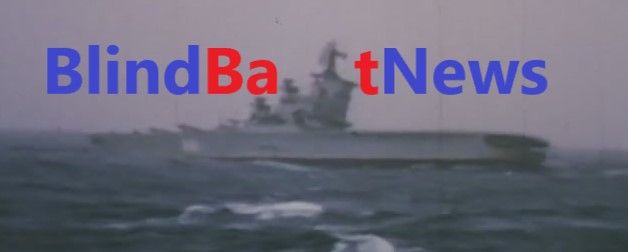 MOSKVA CLASS SUBMARINE HUNTERS, STOP CALLING THEM AIRCRAFT CARRIERS!
MOSKVA CLASS SUBMARINE HUNTERS, STOP CALLING THEM AIRCRAFT CARRIERS!
1:600 USS IOWA CLASS KITS: AURORA, MONOGRAM, OTAKI, REVELL. AN APPEAL TO AIRFIX!
1:72 HEINKEL HE-51: HASEGAWA VS. ICM
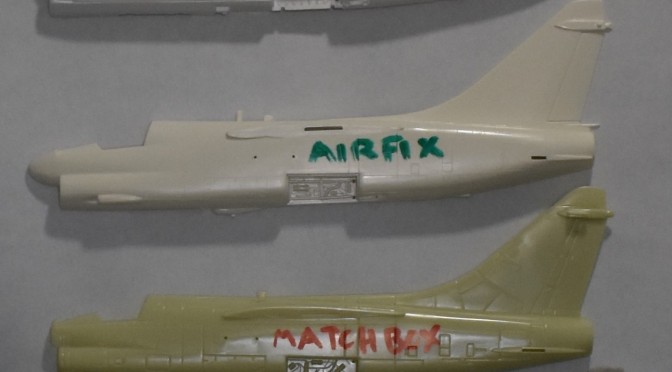
I’ve collected a few LTV A-7 Corsair 2 kits in 1/72 scale, and noticed a lot of difference in shape. I’ve also learned that the latest and greatest kit issue from Asia isn’t so great.
Update: I recently got the ancient 1979 The A-7 Corsair II in Detail & Scale and immediately noticed a difference in the Ed Moore scale drawings and the Bunrin-Do (1989 #18 Famous Airplanes of the World: LTV A-7 Corsair II Navy Version) drawings I originally used for this review. The Bunrin-Do drawings look much better than the Ed Moore drawings but does that mean they’re more accurate?
Click the pics to make bigger and read results
The Hobby Boss kit (it needs to die or be completely re-tooled) is disappointing dimensionally, even the Mark 82 bombs are incredibly anorexic! The Hobby Boss main wing is almost right on with the Bunrin-Do drawings. The elevators are accurate close to the fuselage, but start to slightly narrow at the tip (but nothing like the narrowness of the other kits). Despite the fuselage being too narrow, the canopy is slightly too fat. If you think the Hobby Boss kit fuselage is too long and skinny, wait until you compare it to the Ed Moore drawings; it’s anorexic! Amazingly the wing is almost spot-on in shape, span and chord! The elevators are ever-so slightly short in span. The canopy is still fat.
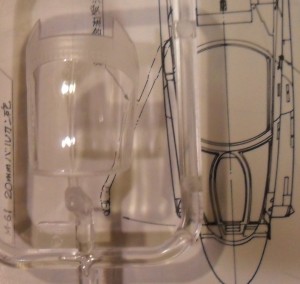
The ‘mold parting’ line on this Hobby Boss canopy matches the center line used by drafters of scale drawings!
And I think I’ve discovered why many Chinese made kits have ‘mold parting’ lines down the center of their canopies: Perhaps they’re not mold parting lines, but the lines from scale drawings? However the Chinese companies are transcribing scale plans of aircraft to the mold making process, they’re including the line drafters use to indicate the center-line of the fuselage?
(Note: I didn’t check windshields, just canopies.)
The ancient Hasegawa kit (still being issued) fuselage has good shape but is slightly short when compared to the Ed Moore drawings. The antennae on the spine are in the wrong place. The old issue kit is missing the ECM antenna on the vertical tail, but supposedly later issues were revised. The elevators are too small. The wings are slightly short in span but match the shape of the drawings. The canopy profile matches the drawings but is slightly fat in cross-section. Compared to the Bunrin-Do drawings the Hasegawa fuselage is too short. Here’s where it gets weird, the elevators and canopy match the Bunrin-Do drawings, but the wings are even shorter in span when compared to the Ed Moore drawings!
When compared to the Bunrin-Do drawings the Airfix (also issued by MPC) kit fuselage is the most accurate shape wise, but the main wings are too short in span, narrow in chord, and the wing tips are cut straight instead of being curved. The elevators are too short with incorrect shaped tips. The canopy looks the right width, but the rear portion of the frame is missing as it is part of the kit fuselage, so no way to pose it open. Compared to the Ed Moore drawings the Airfix main wings have the same problem; too short, wrong shape. The elevators are not only short in span but in chord as well. The canopy is slightly fat. The fuselage length matches the Ed Moore drawings, but the vertical tail is further back on the spine and the antennae are in the wrong place. Interestingly the 1979 edition of the Detail & Scale book praises the Airfix kit as being “the best kit available”.
The Matchbox kit fuselage matches the shape of the Ed Moore drawings almost perfectly (the kit was issued after the Detail & Scale book was first published) but is slightly long. The canopy is slightly flat in profile, but matches in cross section, it is molded as a one piece canopy-windshield, and like the Airfix kit, the framing for the canopy is molded as part of the fuselage. The wing matches the span and wing tip shape of the Ed Moore drawings, but is narrow in chord. The elevators match the drawings. Compared to the Bunrin-Do drawings the elevators are the correct size, but the tips are the wrong shape. The wing is too short and too narrow. The canopy matches the profile and cross-section. The fuselage is too short, and too narrow at the ass-end.
Revell’s ancient kit (repeatedly re-issued, somebody put it out of our misery!) matches the shape of the Ed Moore fuselage, but is slightly long. The ECM antenna on the tail (apparently added to later issues of the kit) is too small. The canopy-windshield matches the drawings, but like the Airfix and Matchbox kits, the framing for the canopy is molded as part of the fuselage. Revell’s wing is the best as far as how it mounts to the fuselage; it is molded as part of the spine which greatly reduces the need for filling in join lines (debatable), however, the wing is the wrong shape and long in span. The elevators have too great a sweep. According to the Bunrin-Do drawings the wing is too short in span and too narrow. The elevators have the same sweep-back problem. The canopy-windshield seem slightly small compared to the drawings. Like the Matchbox kit, the fuselage is too short, and too narrow, at the ass-end.
Comparing the ESCI (re-boxed by AMT-ERTL/Italeri) main wing to the Bunrin-Do drawings it is way too short in span, and the elevators are too narrow. The canopy seems the right width, but the rear portion of the frame is not correct. The Ed Moore drawings say the same thing about the main wing, the elevators fair better by barely matching the drawings. The canopy looks good. The fuselage matches the profile of the drawing but is slightly short. The tip of the vertical tail does not match Ed Moore’s drawing, but none of the kits do as the drawing shows the tail tip being rounded, which is wrong (oh my, you mean an authoritative scale drawing is wrong?)! ESCI kits usually come with good decals.
The Fujimi main wing is barely short going by the Bunrin-Do drawings. The elevators are way too narrow, and the canopy slightly fat with incorrect rear frame. The fuselage matches the Ed Moore drawings. Spine antennae are in the wrong location. The canopy matches. The elevators are narrow in chord and have incorrectly shaped tips. The wing is slightly short in span due to incorrectly shaped tips. Nice decals came with my kit.
Ordinance: The only kits in this review with decent weapons load are the ESCI and Fujimi kits, not great, but better than the lumps of plastic you kit with the other brands. The skinny Hobby Boss Mark 82s come with optional fuse extenders.
IFR (In-Flight Refueling): The Matchbox kit provides IFR for USAF aircraft only. The Airfix kit provides IFR for USN aircraft only. Hasegawa provides IFR for USN only, which is interesting because the AMT re-box (A-693:130) comes with markings for a USAF version. Revell’s kit has IFR for USN only, despite numerous re-issues with USAF decals. Fujimi, ESCI and Hobby Boss provide IFRs for both USAF and USN (depending on which issue of the kit you buy).
Out of the kit manufactures I compared none are accurate overall (and none got the main wing tip shape correct). I read from other kit builders that the only way to get an accurate 1/72 scale A-7 is to kit-bash several kits from different makers. From my perspective, it might be done by combining the Fujimi or Airfix fuselage with the Hobby Boss wing, for a start. If you’re planing on building a kit to enter into a highly competitive model contest then kit-bashing is your only choice, but most of us don’t have the time (or money).
The A-7 has such a unique look and all the kits capture that look despite having shape issues, so, if you’re building one just for the heck of it then save some money and buy the cheapest one you can find, and go for it.
Notes: Before re-boxing the ESCI kit, AMT also re-boxed the Matchbox kit (late 1970s) and the super-ancient Hasegawa kit (early 1970s). The AMT/Matchbox issue uses the original Matchbox artwork and the phrase “Molded in 3 Colors” (using the U.S. English spelling of the word colors).
The website ScaleMates reports the Ace Hobby Kit A-7 is a copy of the Hasegawa kit, wrong! The Ace A-7 is a re-tooled terrible copy of the ESCI kit. Ace offers it in A, B, D, E versions, but all are wrong, like not having the correct parts, or decals, for the version offered! Stay away from the Ace kit.
Heller re-boxed the Airfix A-7 in the 1990s when Airfix and Heller were owned by a single parent company (Humbrol).
USAF A-7 CORSAIRS, WHATEVER HAPPENED TO?
1/48 scale comparison A-7 Corsair 2: Aurora, Revell-Monogram, ESCI, Hasegawa & Hobby Boss
Cold War Aggressor: 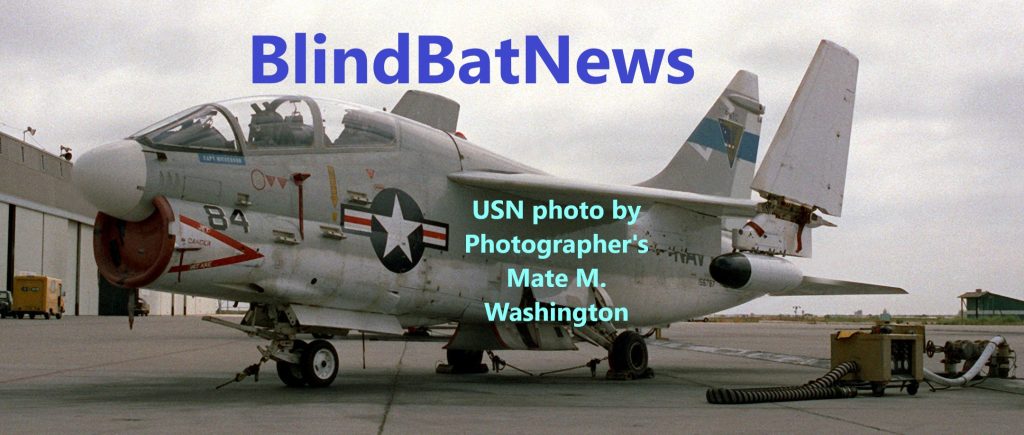 EA-7L THE ‘ELECTRIC’ TA-7C CORSAIR-2
EA-7L THE ‘ELECTRIC’ TA-7C CORSAIR-2
Cold War Maintenance Walk Around: 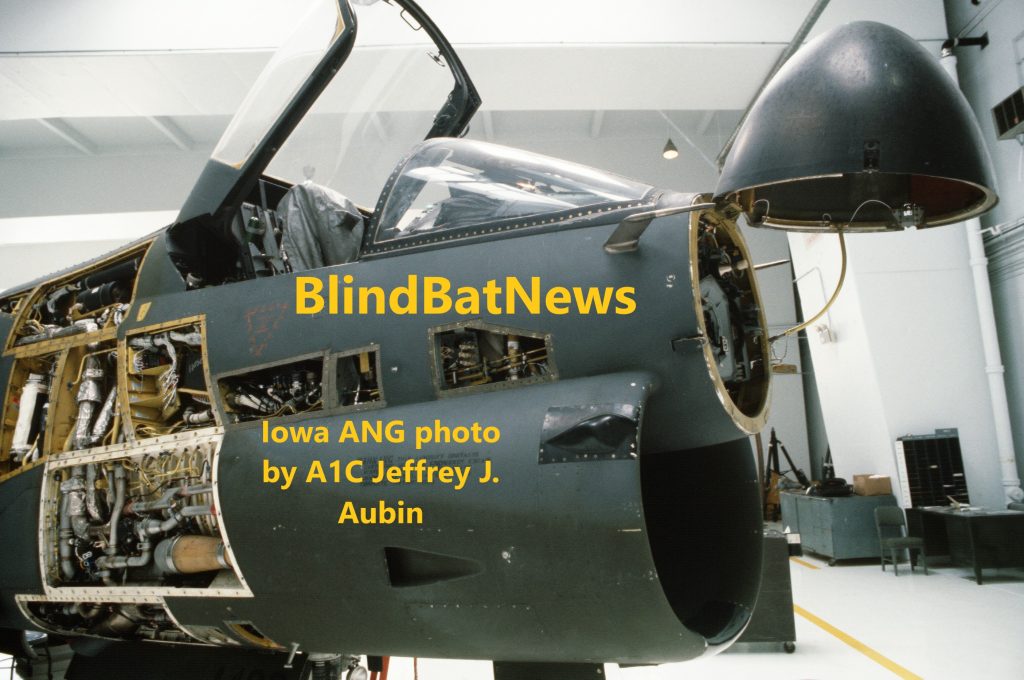 A-7D CORSAIR-2
A-7D CORSAIR-2
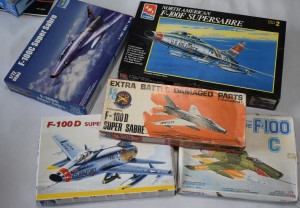 1:72 F-100 SUPER SABER KIT KLASH, OR MORE REASONS WHY YOU CAN’T TRUST SCALE DRAWINGS
1:72 F-100 SUPER SABER KIT KLASH, OR MORE REASONS WHY YOU CAN’T TRUST SCALE DRAWINGS